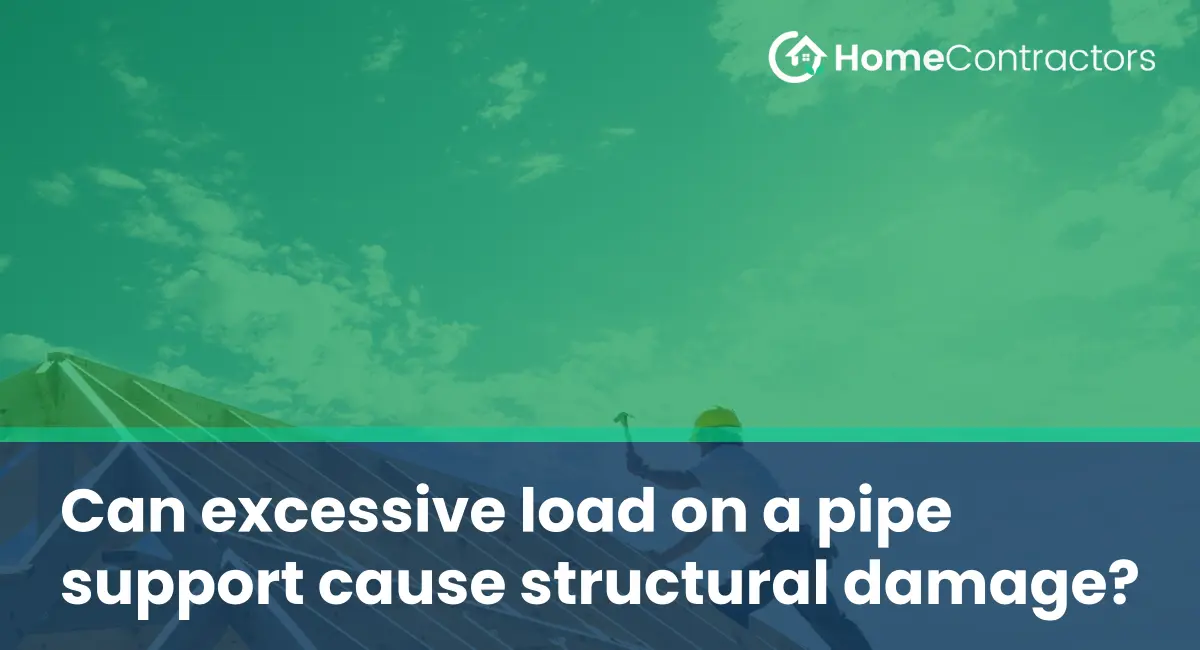Pipe supports play a crucial role in maintaining the integrity and stability of piping systems in various industries. However, the continuous operation of these systems under immense loads can potentially lead to structural damage if not properly understood or managed. In this article, we will explore the effects of excessive load on pipe supports and shed light on the importance of proactive measures to mitigate potential risks.
Understanding the Function of Pipe Supports:
A. Purpose and Role:
Pipe supports are designed to secure and stabilize pipes, ensuring their proper alignment, weight distribution, and resistance to external forces such as vibrations, thermal expansion, and seismic activities.
B. Types of Pipe Supports:
- Static Supports: Anchors, guides, and constant supports.
- Variable Supports: Hangers, spring supports, and snubbers.
- Dynamic Supports: Shock and vibration isolators.
Identifying Excessive Load on Pipe Supports:
A. Normal Operating Loads:
- Dead Loads: The weight of the pipes, fluids, and insulation.
- Live Loads: Transient loads caused by processes, fluids, or equipment such as valves or pumps.
B. Environmental Factors:
- Seismic Events or Earthquakes
- Thermal Expansion and Contraction
- Vibration and Oscillations
Potential Effects of Excessive Load on Pipe Supports:
A. Overloading of Supports:
- Stress Concentration: Concentrated loads beyond design limits strain supports and surrounding pipe sections.
- Displacement: Excessive load can cause pipe bending or sagging, leading to misalignment and increased vulnerability.
B. Fatigue Failure:
- Repeated Stress: Cyclic loads from excessive operational conditions weaken the support, potentially resulting in cracks, fissures, or fractures.
- Reduced Lifespan: Frequent stress cycles can significantly reduce the longevity of pipe supports, necessitating maintenance or replacement.
Structural Damage from Excessive Load:
A. Pipe Misalignment:
- Increased Stress Concentration: Misaligned pipes endure uneven loads, leading to excessive strain points.
- Leakage and Failure: Misalignment can cause gaskets or joints to fail, resulting in leaks, ruptures, or even catastrophic blowouts.
B. Pipe Warping and Buckling:
- Loss of Integrity: Distorted or buckled pipes compromise fluid flow, reducing system efficiency.
- Potential for Collapse: Severely warped or buckled pipes may collapse, posing significant safety risks.
Foundation or Structure Damage:
- Indirect Consequences: Pipe supports experiencing excessive loads can transmit forces to the surrounding structure, potentially causing cracks, foundation shifting, or even structural failure.
- Costly Repairs: Structural damage often requires substantial resources and time-consuming repairs, impacting operations and finances.
Mitigating Excessive Load Risks:
A. Proper Design and Installation:
- Thorough Load Analysis: Conducting comprehensive load calculations ensures appropriate support design.
- Material Quality: Select high-quality components that meet code requirements and industry standards.
B. Ongoing Inspections and Maintenance:
- Regular Assessments: Periodic inspections to identify potential issues and address them promptly.
- Load Monitoring: Installing load monitoring systems to continuously track load distribution and identify potential overloads.
Adequate support and Reinforcement:
- Upgrading Supports: Adding additional supports or reinforcing existing ones to distribute loads evenly.
- Vibration and Shock Control: Implementing isolators or dampeners to mitigate excessive vibrations or oscillations.
Excessive load on pipe supports can lead to severe structural damage, compromising the integrity and safety of a piping system. Understanding the effects of excessive load and implementing proactive measures, such as proper design, regular inspections, and reinforcement, is crucial to ensure the longevity and reliability of pipe supports. By prioritizing load management and structural integrity, industries can significantly reduce the risks associated with excessive load on pipe supports.
